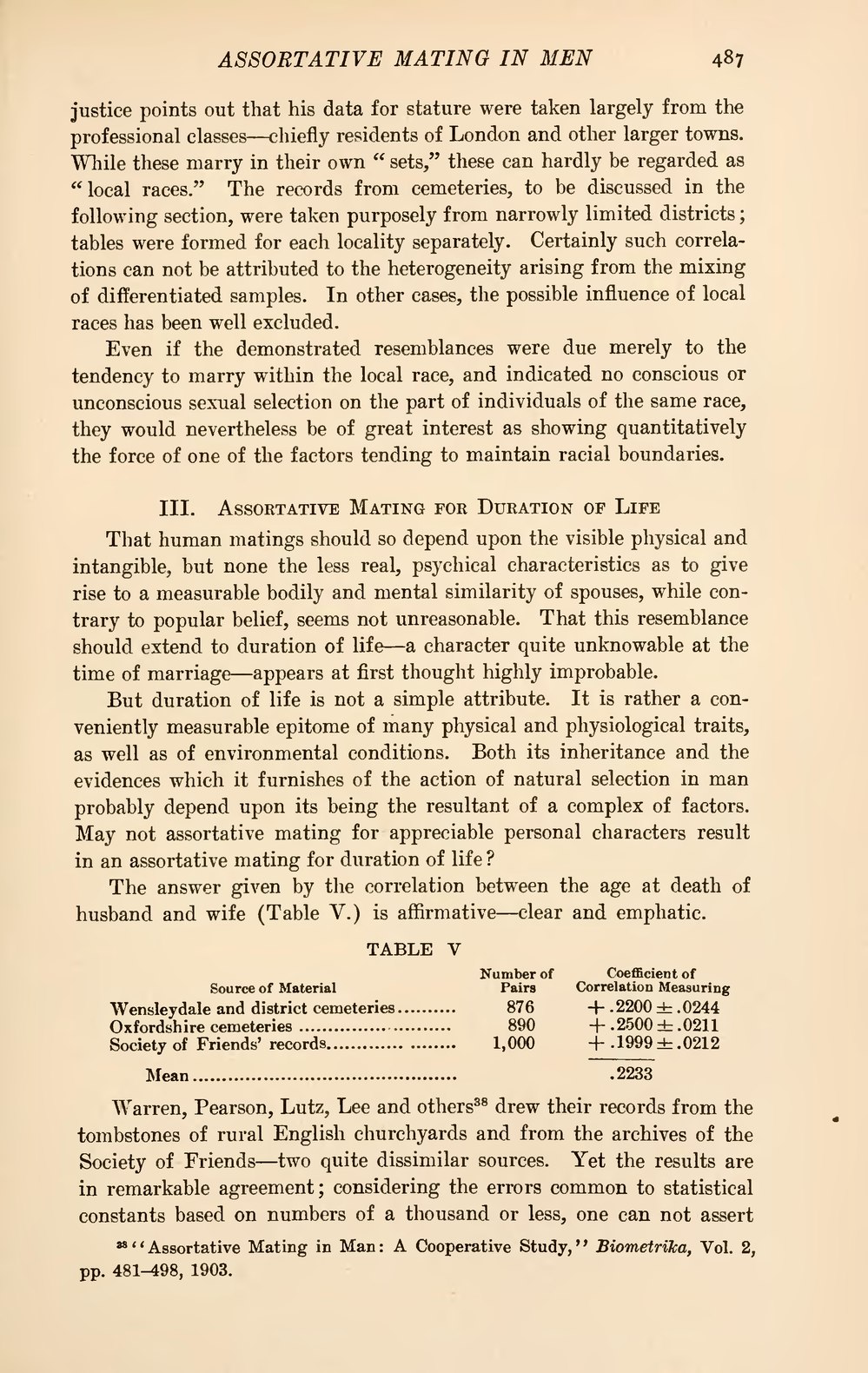justice points out that his data for stature were taken largely from the professional classes—chiefly residents of London and other larger towns. While these marry in their own "sets," these can hardly be regarded as "local races." The records from cemeteries, to be discussed in the following section, were taken purposely from narrowly limited districts; tables were formed for each locality separately. Certainly such correlations can not be attributed to the heterogeneity arising from the mixing of differentiated samples. In other cases, the possible influence of local races has been well excluded.
Even if the demonstrated resemblances were due merely to the tendency to marry within the local race, and indicated no conscious or unconscious sexual selection on the part of individuals of the same race, they would nevertheless be of great interest as showing quantitatively the force of one of the factors tending to maintain racial boundaries.
III. Assortative Mating for Duration of Life
That human matings should so depend upon the visible physical and intangible, but none the less real, psychical characteristics as to give rise to a measurable bodily and mental similarity of spouses, while contrary to popular belief, seems not unreasonable. That this resemblance should extend to duration of life—a character quite unknowable at the time of marriage—appears at first thought highly improbable.
But duration of life is not a simple attribute. It is rather a conveniently measurable epitome of many physical and physiological traits, as well as of environmental conditions. Both its inheritance and the evidences which it furnishes of the action of natural selection in man probably depend upon its being the resultant of a complex of factors. May not assortative mating for appreciable personal characters result in an assortative mating for duration of life?
The answer given by the correlation between the age at death of husband and wife (Table V.) is affirmative—clear and emphatic.
TABLE V
| Source of Material | Number of Pairs |
Coefficient of Correlation Measuring | ||
| Wensleydale and district cemeteries | 876 | + .2200 ± .0244 | ||
| Oxfords'hire cemeteries | 890 | + .2500 ± .0211 | ||
| Society of Friends' records | 1,000 | + .1999 ± .0212 | ||
| Mean | .2233 | |||
Warren, Pearson, Lutz, Lee and others[1] drew their records from the tombstones of rural English churchyards and from the archives of the Society of Friends—two quite dissimilar sources. Yet the results are in remarkable agreement; considering the errors common to statistical constants based on numbers of a thousand or less, one can not assert
- ↑ "Assortative Mating in Man: A Cooperative Study," Biometrika, Vol. 2, pp. 481-498, 1903.

